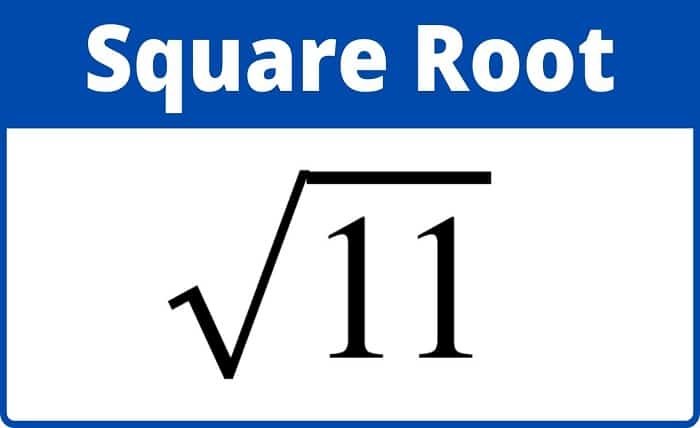11 Squared: Mathematics, Applications, and Beyond

Introduction
Mathematics is filled with intriguing numbers and operations, and one such interesting concept is 11 squared. When we talk about 11 squared, we’re referring to the number 121, derived from multiplying 11 by itself. This simple yet fascinating operation has numerous implications and applications in various fields. In this comprehensive guide, we’ll explore the world of 11 squared, delving into its mathematical significance, real-world uses, historical context, and much more.
What is 11 Squared?
11 squared is a basic mathematical operation that results in the number 121. To calculate 11 squared, you simply multiply 11 by itself: 11×11=12111 \times 11 = 121. This operation is an example of exponentiation, where 11 is the base and 2 is the exponent, indicating the base is multiplied by itself once.
Mathematical Significance of 11 Squared
The mathematical significance of 11 squared extends beyond simple multiplication. Understanding 11 squared can help in grasping more complex concepts in algebra, geometry, and number theory. The number 121 is a perfect square, which means it can be represented as the area of a square with sides of length 11. This property of 11 squared is useful in various geometric and algebraic calculations.
Historical Context of 11 Squared
The concept of squaring numbers, including 11 squared, has been around for centuries. Ancient mathematicians from various cultures, including the Greeks, Egyptians, and Babylonians, studied and utilized squares in their mathematical practices. The study of perfect squares like 11 squared has contributed to the development of modern mathematical theories and applications.
Real-World Applications of 11 Squared
11 squared has numerous real-world applications, particularly in fields such as engineering, architecture, and computer science. For instance, understanding 11 squared can be crucial in calculating areas and volumes in construction projects. In computer science, algorithms that involve squaring numbers, including 11 squared, are used in encryption and data compression techniques.
11 Squared in Algebra
In algebra, 11 squared plays a role in various equations and formulas. For example, quadratic equations often involve squared terms, and recognizing the significance of 11 squared can aid in solving these equations. Additionally, understanding the properties of 11 squared can help in factoring and simplifying algebraic expressions.
11 Squared in Geometry
Geometry frequently involves squared numbers, including 11 squared. The area of a square with a side length of 11 units is calculated as 11 squared, or 121 square units. This geometric property is essential in solving problems related to areas, perimeters, and volumes of geometric shapes.
11 Squared in Number Theory
Number theory, a branch of pure mathematics, delves into the properties and relationships of numbers. 11 squared, being a perfect square, has special significance in number theory. It is part of the sequence of squared integers and is used in various theorems and proofs related to prime numbers, divisibility, and modular arithmetic.
Fun Facts About 11 Squared
There are several fun and interesting facts about 11 squared. For example, 121 is a palindromic number, meaning it reads the same forwards and backwards. Additionally, 11 squared appears in various mathematical puzzles and brain teasers, making it a favorite among math enthusiasts.
Visualizing 11 Squared
Visualizing 11 squared can help in better understanding its properties. One way to visualize 11 squared is by drawing a square with 11 units on each side. The total area of this square, 121 square units, represents 11 squared. This visual representation can be a useful tool in teaching and learning mathematics.
11 Squared in Higher Mathematics
In higher mathematics, 11 squared is used in more advanced concepts such as calculus and linear algebra. For instance, squaring functions and matrices often involve understanding basic squares like 11 squared. Mastery of these fundamental operations is crucial for tackling more complex mathematical problems.
11 Squared in Popular Culture
Numbers, including 11 squared, often appear in popular culture, such as movies, books, and art. For example, the number 121 might be used symbolically or as a reference in various contexts. Recognizing these references can add an extra layer of appreciation for the mathematical concepts woven into popular culture.
Teaching 11 Squared
Teaching the concept of 11 squared can be both fun and educational. Using visual aids, real-world examples, and interactive activities can help students grasp the importance and applications of 11 squared. Encouraging students to explore and experiment with squaring numbers can foster a deeper understanding and appreciation of mathematics.
Conclusion
11 squared, or 121, is more than just a simple mathematical operation. Its significance spans across various fields, from basic algebra and geometry to advanced number theory and real-world applications. By understanding 11 squared, we gain insights into the broader world of mathematics and its connections to our everyday lives. Whether you’re a student, educator, or math enthusiast, exploring 11 squared can be a rewarding and enlightening experience.
FAQs
1. What is 11 squared?
11 squared is the result of multiplying 11 by itself, which equals 121.
2. Why is 11 squared important in mathematics?
11 squared is important because it helps in understanding concepts in algebra, geometry, and number theory. It is also used in various real-world applications.
3. Can 11 squared be visualized?
Yes, 11 squared can be visualized as a square with sides of 11 units, resulting in an area of 121 square units.
4. How is 11 squared used in real life?
11 squared is used in fields like engineering, architecture, and computer science for calculations involving areas, volumes, and algorithms.
5. What are some interesting properties of 11 squared?
11 squared, or 121, is a palindromic number and a perfect square. It appears in various mathematical puzzles and has unique properties in number theory.





